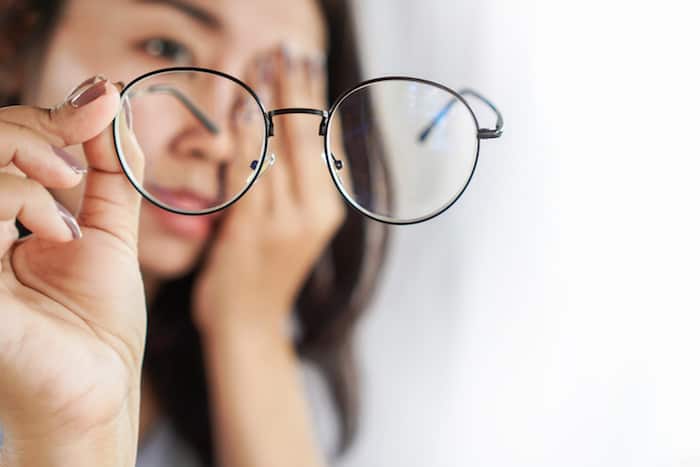Shopping for the perfect eyewear can be time-consuming, but the rewards are worth all the effort. This is especially true for Asians. See, the problem with the eyewear market today is the fact that most eyepieces are made to fit Caucasian features. This is not to say that there is something wrong with Asian facial features. It’s just that traditional eyewear designs have some shortcomings.
It also doesn’t mean Asians can settle for whatever eyeglasses they can find at optical stores. The term Asian glasses doesn’t only apply to Asians. No matter what race, anyone who has short or low nose bridges, high cheekbones, and wide facial feature can benefit from choosing Asian fitting eyewear.
Manufacturers are increasingly modifying their products to fit not just Asian features, but those of other ethnicities as well. A guide to comprehensive Asian eyewear fitting can help you decide on the right eyepiece to buy.
The Importance of Buying The Right Fit
If you suffer from vision problems like astigmatism, myopia, and even migraines, having the eyewear that fits your features perfectly will ensure that you’re comfortable even if you must wear the glasses all day, every day. Even if you don’t suffer from poor eyesight, having the perfect-fitting eyewear can give your eyes better protection as it’s more likely to cover your eyes against exposure from the elements.
So, choosing the right eyewear goes beyond knowing its purpose. For example, being able to differentiate between reading and computer eyeglasses will not be enough. You also need to find the right fit. This is crucial in making sure your eyepiece can provide great functionality, performance, and comfort. Nothing can be more irritating for users than a pair of glasses that keeps on sliding or falling off. The eyewear that fits you perfectly will be able to do its job properly. That said, you need to be discerning about the size and not just the function of the eyewear you buy.
What Is The Right Fit?
Personal preferences can impact your idea of what eyewear fits perfectly. However, there are some proven rules you may want to follow. The perfectly fitting eyeglasses should:
- Sit snugly in the middle of the face.
- Sit lower than the eyebrows.
- Have a width equal to the widest points of your face.
- Have evenly distributed weight on your nose bridge.
- Have stems or temples that are long enough to reach and fit around the ears.
- Have optical center of the lens perfectly aligned with your pupils.
- Allow you to move your head without them falling or sliding off.

What Is Asian-Fit Eyewear
When buying asian glasses, you essentially look for a pair that’s designed for features with short or low nose bridges, high cheekbones, and wide face. As you may have observed, having these facial features makes it easy for any type of eyewear to slide off, tilt, or fall.
Here’s how the right Asian eyewear can correct these features:
- As for the short or low nose bridge
Your optical store will most likely offer glasses which have been tweaked to address a low nose bridge. Typical eyewear fitted for Asians will have some nose-pad or plastic bridge built into the frame. This added padding provides additional support to prevent the eyewear from tilting or sliding off.
- As for the high cheekbones
Traditional eyeglasses have tilted lens when viewed from the sides of the wearer’s head. For Caucasians, and perhaps other ethnicities, the tilted lens frame allows for better balance and closer fit. But, the thing is, Asians typically have higher cheekbones and the tilt or curvature will serve no purpose. Couple that with shorter nose bridges, and you see most Asians wearing eyewear that sits too close or rests on the cheeks rather than on the nose bridge. It’s awkward and downright uncomfortable. The right Asian glasses should have minimal tilt.
Other than the lens tilt, having shorter lenses can also address the issue of the eyewear resting closely or on the cheeks. Shorter lenses provide some space allowance that prevents the eyewear frame from even touching the cheeks.
- As for the wide face
Asian-fit eyewear have wider frames to accommodate the relatively wider facial feature. This type of frame not only ensures that the edges of the frame can reach the sides of the face, but it also enhances the balance, fit, and comfort of the glasses.
Takeaway
Wearing eyeglasses that do not fit you perfectly can impair your vison and even cause dizziness or headaches. Even if you don’t suffer from a vison-related condition, using the right eyewear can help improve your eyesight. While the quality of the lens or filter in your eyeglasses can affect the performance of your eyewear, the right frame size is also crucial to ensure your eyewear fits comfortably.
For people with short or low nose bridges, high cheekbones, and wider facial features, choosing Asian fitting eyewear can address the problems posed by ill-fitted glasses. It must be emphasized that the term Asian-fit does not mean this type of eyewear are suited only for Asians. Anyone who has the same facial features described above can use an Asian eyewear fitting guide.
The Editorial Team at Healthcare Business Today is made up of skilled healthcare writers and experts, led by our managing editor, Daniel Casciato, who has over 25 years of experience in healthcare writing. Since 1998, we have produced compelling and informative content for numerous publications, establishing ourselves as a trusted resource for health and wellness information. We offer readers access to fresh health, medicine, science, and technology developments and the latest in patient news, emphasizing how these developments affect our lives.








